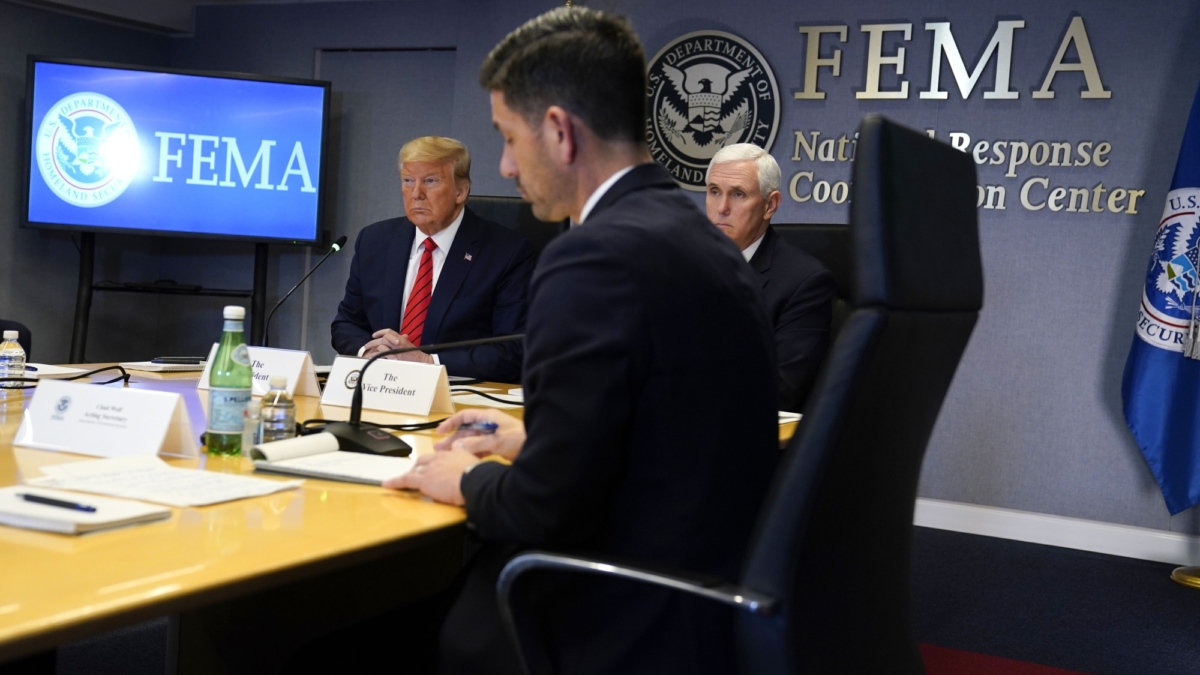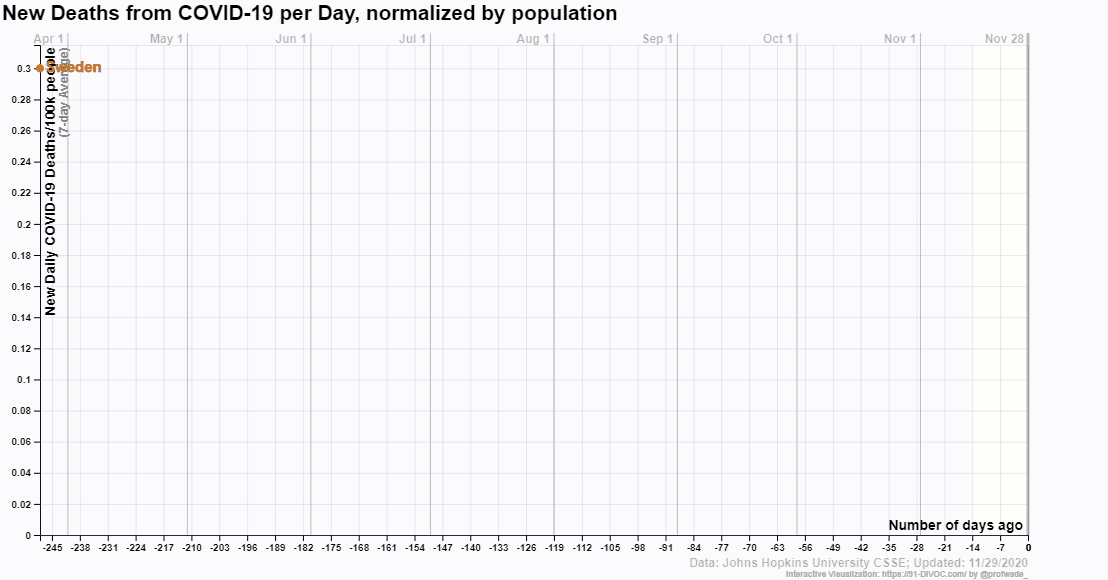Illegal gold rush in the Amazon raises risk to indigenous people – “They are coming in like starved beasts, looking for the wealth of our land”
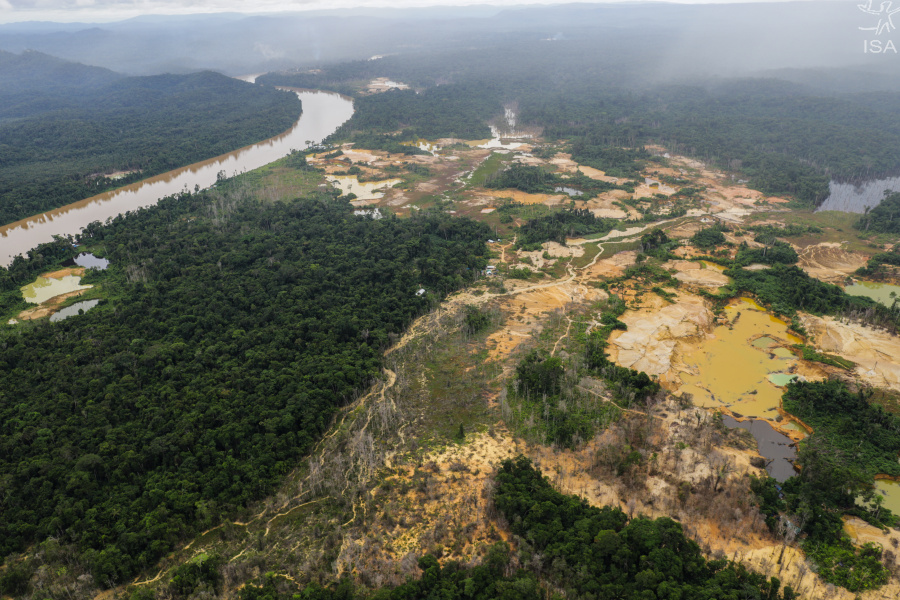
By Luana Souza
24 March 2021
(Bloomberg News) – Illegal gold and diamond mining is proliferating in Brazil’s Amazon rain forest and threatening South America’s largest group of native people who still live in relative isolation, the Yanomami.
Criminal mining groups are encroaching on the indigenous territory that straddles Brazil and Venezuela, polluting rivers, bringing diseases like Covid-19 and malaria, and stirring fears of a repeat of the brutal slaughter of 16 Yanomami by illegal prospectors in the 1990s, according to a report published Thursday by Brazilian conservation group Instituto Socioambiental and the Hutukara Yanomami and Wanasseduume Ye’kwana associations.
“They are coming in like starved beasts, looking for the wealth of our land,” Davi Kopenawa, chairman of the Hutukara Yanomami Association, said in a statement. “They are advancing very fast. They are arriving in the middle of the Yanomami land. The prospectors are already reaching my home.”
The potential humanitarian disaster facing the Yanomami is just the latest red flag of deteriorating conditions in the world’s biggest rain forest under Brazilian President Jair Bolsonaro, who clashed with his counterpart Joe Biden during the U.S. presidential race last year over deforestation in the Amazon. The remote northern region some 2,000 miles away from the industrialized southeast has also been one of the hardest hit by the pandemic, with many people dying without any support from oxygen tanks or medication. [more]
Illegal Gold Rush in the Amazon Raises Risk to Indigenous People
Scars in the forest: illegal gold mining advanced 30 percent in the Yanomami Indigenous Land in 2020
By Evilene Paixão
25 March 2021
(Instituto Socioambiental) – From January to December 2020, an area equivalent to 500 soccer fields was devastated in the Yanomami Indigenous Land, located in the far north of Brazil, between the states of Amazonas and Roraima. Five hundred hectares of Amazon rainforest have been destroyed by illegal mining on the Indigenous territory. The total deforested area is 2,400 hectares—in 2020 alone it increased by 30 percent.
Even with the Covid-19 pandemic, which has killed more than 260,000 people across the country, illegal activity has never stopped—on the contrary. Produced by Hutukara Yanomami Association (HAY) and Wanasseduume Ye’kwana Association (Seduume), the report “Scars in the Forest – Evolution of illegal mining in the Yanomami Indigenous Land (YIL) in 2020”, published on March 25, denounces how this criminal activity has been proliferating in the Indigenous land, going up the rivers and getting closer and closer to Indigenous communities, with new access routes penetrating the forest.
The report emphasizes six regions especially affected by the devastation, such as Waikás and Kayanau, with 35% and 23% of the total scars mapped, respectively. The document also points out the exact location of new gold mining centers in along the main river beds that flow through the Indigenous land, particularly the Uraricoera River, which accounts for more than half (52%) of the entire area degraded by mining activity. Until recently, the mining site known as “Tatuzão do Mutum,” on the banks of the Uraricoera River, concentrated the largest portion of prospection activities in the region. Today, in addition to it, three new mining areas have appeared near the communities of Aracaçá, Korekorema and the Ye’kwana de Waikás.
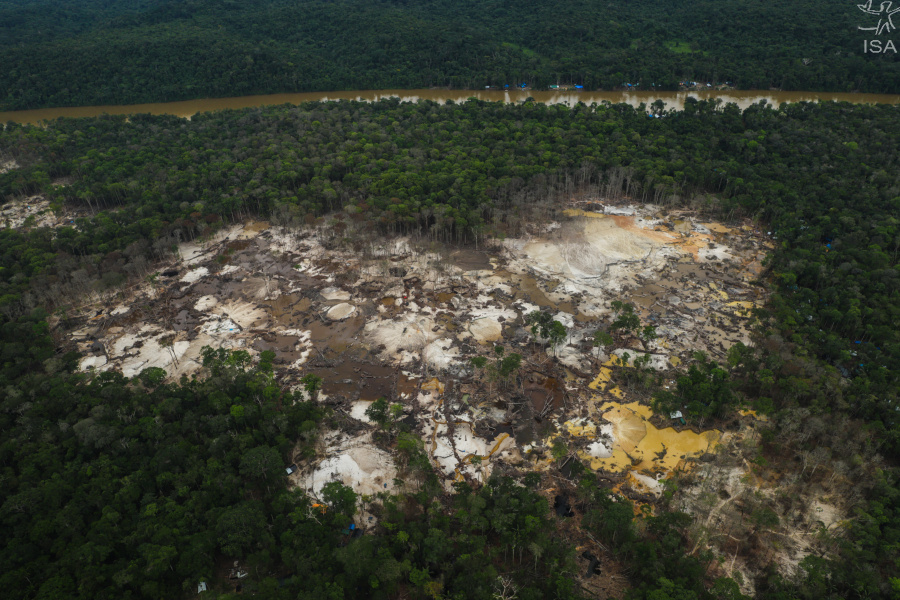
Yanomami leader and shaman Davi Kopenawa, chairman of the Hutukara Yanomami Association, says he is concerned and outraged by the current invasion by prospectors. “You see the dirty water, the yellowish river, pits everywhere. These prospectors are like pigs from big farms—they dig a lot of holes looking for precious stones like gold and diamonds. They eventually come back. Twenty years ago, we managed to send these invaders away, and they returned. They are coming in like starved beasts, looking for the wealth of our land. They are advancing very fast. They are arriving in the middle of the Yanomami land. The prospectors are already reaching my home,” reported Kopenawa.
The shaman also fears for a conflict with the invaders. “I am very concerned, because the prospectors are not alone, they’ve assembled in large groups, they are armed, supported by businessmen, the governor of Roraima and President Bolsonaro, as well as other Brazilian businessmen. Here in Roraima, prospectors, businessmen and politicians do not respect Indigenous peoples, they just want to take away our wealth,” emphasized Kopenawa.
The document points to the increase in conflicts between Indigenous people and prospectors as one of the effects of the increased presence of invaders in the Yanomami Indigenous Land, citing the murder of two young Yanomami in the Parima River region, in July 2020. Earlier this year, on February 25, indigenous people in the Helepe community suffered an attack by prospectors that resulted in a seriously injured indigenous man and the death of one of the prospectors—they withdrew, threatening to retaliate. In the recent past, similar situations resulted in massacres such as that of Haximu, in 1993, the first case of genocide recognized in Brazil.
The report was based on satellite images from the Planet and Sentinel 1 constellation, which conducts a monthly mapping of degraded areas in the YIL, and information from complaints and reports from communities. A flyby of the Illegal Mining Monitoring System at the YIL carried out in December 2020 captured the images that complement the survey.
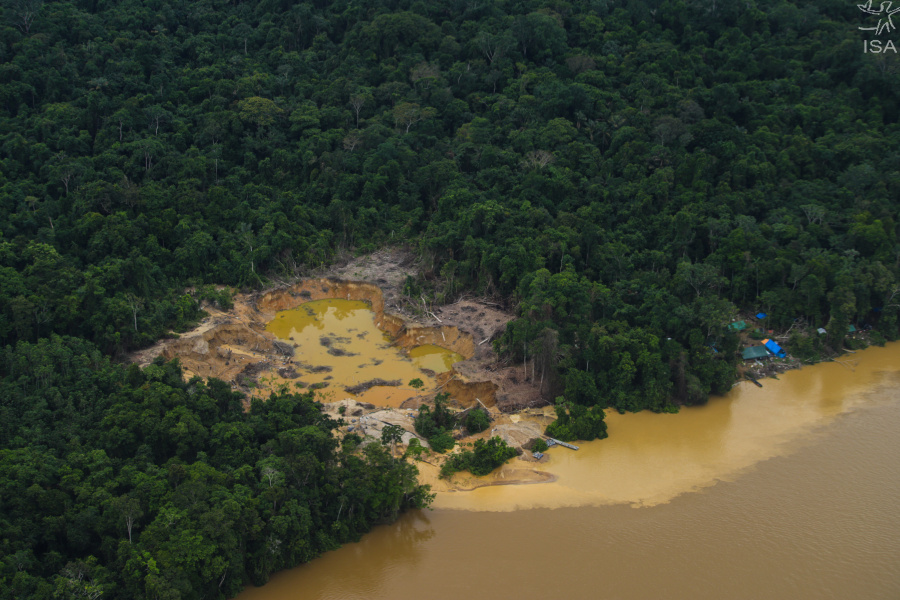
Isolated peoples may be on the brink of genocide
The new survey also denounces how the advance of prospectors in the Indigenous territory has brought diseases to communities, especially malaria and Covid-19, putting at risk the survival of isolated indigenous groups, even more vulnerable to diseases. “The data also indicates an increase in the pressure on Indigenous groups in voluntary isolation, the Moxihatëtëma, pressured by the increasing numbers of prospectors in the region of Serra da Estrutura, only a few kilometers from their communities. Any forced contact, at this stage, risks triggering a tragic genocide scenario,” the report says.
The document, signed by the Hutukara Yanomami Association and the Wanassedume Ye’kwana Association, demands a series of recommendations to the authorities and government agencies, emphasizing the urgent publication of an integrated plan for total disintrusion of mining from the Yanomami Indigenous Land, as well as resume periodical operations in the indigenous land for removal of irregular infrastructure installed and advance investigations to identify and hold responsible the actors of the illegal gold chain. The report will be delivered by the indigenous leaders to federal agencies responsible for the territorial inspection of the YIL.
“Hutukara has already denounced the presence of prospectors many times, with well-explained and detailed documents. We have to hand the report over to the heads of FUNAI, the Prosecutor’s Office and the Federal Police, which are competent agencies that must take steps to protect our territory. We must even put the document on the hands of the President of the Republic. This is our struggle and we will continue to report abuses. We will fight with no fear—we are defending our right, our Mother Earth. They cannot steal our Land. This is the fight I’m in, together with the new warriors,” concluded Davi Kopenawa.
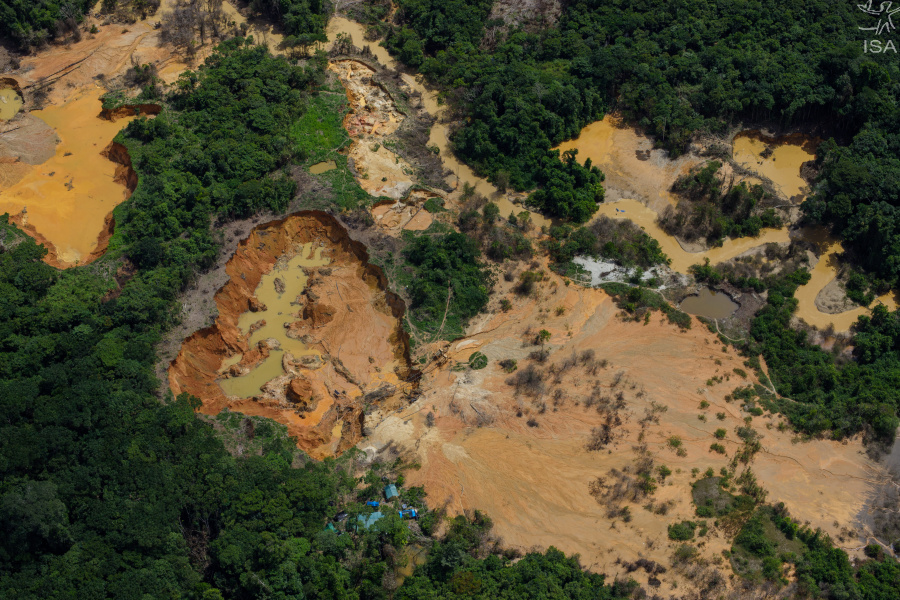
Federal court determines daily fine of R$ 1 million to the Federal Government for failing to remove prospectors from the Yanomami Land
On March 16, the Brazilian Federal Court determined that the Federal Government remove prospectors from the Yanomami Land and put forward an action plan. If the decision is not complied with, a daily fine of R$ 1 million will be imposed to the institutions that must act to remove the invaders. The decision was made public on Tuesday (16).
In July 2020, the Federal Regional Court (TRF1) ruled that the emergency plan should be prepared within 15 days. According to the Federal Public Ministry (MPF), the Federal Government filed several appeals to the Federal Court of Roraima, the TRF1 and the Federal Supreme Court (STF) for not complying with the ruling.
With the new decision, the Federal Government, the National Indian Foundation (Funai), the Brazilian Institute of Environment and Renewable Natural Resources (Ibama) and the Chico Mendes Institute for Biodiversity Conservation (ICMBio) must start removing prospectors within 10 days.
Leaders and officials claim prospectors are the main culprits for taking the coronavirus to the Yanomami Land. In late January, nine Yanomami children died with Covid-19 symptoms, such as fever and shortness of breath. The communities were left unassisted for over two months. If measures had been taken by the Brazilian government, the deaths could have been prevented.
Scars in the forest: illegal gold mining advanced 30% in the Yanomami Indigenous Land in 2020
